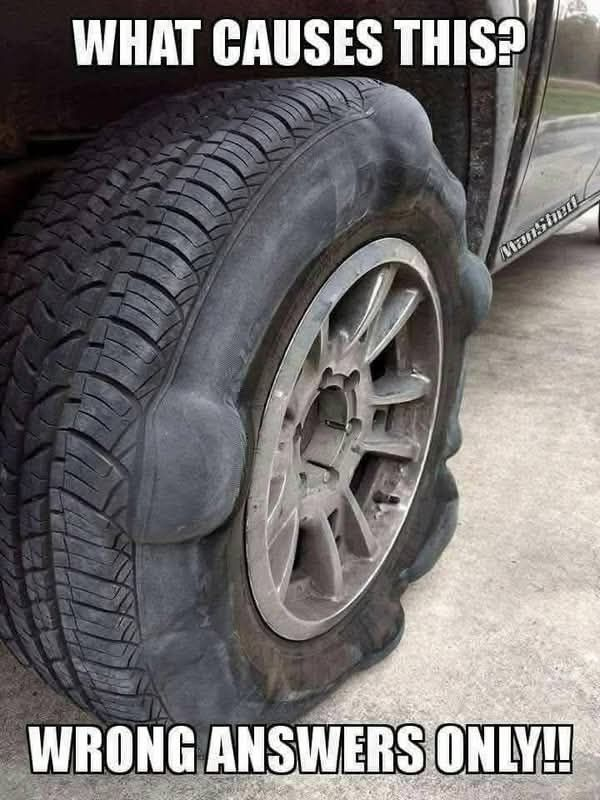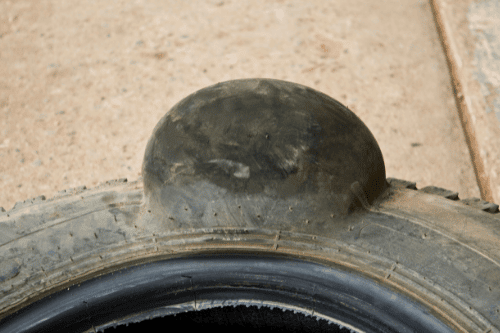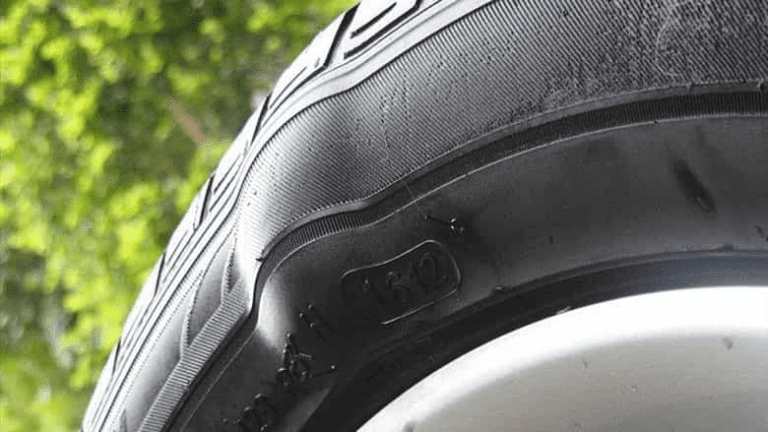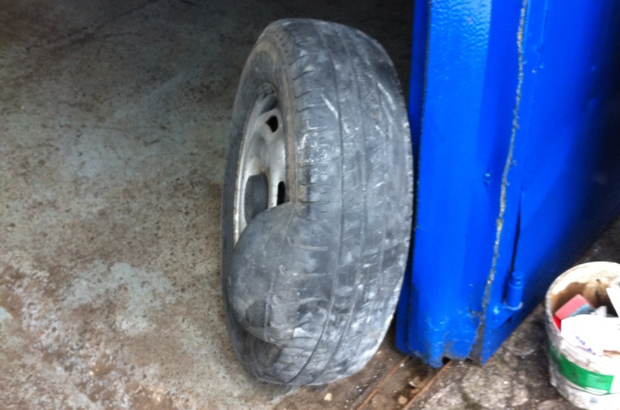Ever noticed a strange bump on the sidewall of your tire and thought, “Eh, it’s probably nothing”? Think again. That innocent-looking bubble is a ticking time bomb—literally. Tire bulging happens when the inner structure of the tire is damaged, but the outer rubber is still holding everything in. It’s like trying to plug a dam leak with chewing gum. Eventually, something’s going to give.
When the reinforcing cords (called plies) inside the tire snap or separate, air pressure forces the inner layers to expand outward. That’s when you get the unmistakable bulge or bubble on the tire’s side. And no, it’s not just cosmetic—it’s one of the most dangerous tire problems you can have.

The Real Culprits: Common Causes of Tire Bulging
Impact Damage: The Road’s Hidden Punch
You know that jolt you feel when your car hits a pothole or clips a curb? That jarring moment can snap the internal cords in your tire without leaving any visible outer damage—at first. Over time, that weak spot gives way, and boom, a bulge appears. It’s like a bruise for your tire, except this one might explode while you’re cruising at 70 mph.
Video: Never burst tyre bubbles
Manufacturing Defects or Just Old Age
Not all tires are created equal. Some roll off the production line with hidden flaws that eventually show up as bulges. More commonly, though, tires just get old. Rubber ages, and the internal adhesives that hold everything together break down. If you’re riding on tires older than six years—even if they look okay—you’re flirting with danger.
Wrong Tire Pressure: The Invisible Saboteur

Driving on tires that are too full or too flat messes with the delicate balance of internal pressure. Underinflated tires flex too much and heat up, while overinflated ones put too much pressure on certain areas. Either way, that added stress weakens the internal structure and sets the stage for—you guessed it—a bulge.
Why a Bulging Tire Is a Serious Danger
Let’s not sugarcoat it: a bulging tire is an accident waiting to happen.
Once the structural integrity is compromised, there’s just one thin layer of rubber between you and a blowout. And blowouts don’t give you a heads-up—they hit fast and hard, especially at high speeds.
Here’s what could go wrong if you ignore it:
- Sudden loss of control, particularly dangerous on highways.
- Swerving into other lanes or hitting barriers.
- Potential rollovers, especially in SUVs or trucks.
- A high risk of collisions involving multiple vehicles.
This isn’t something you can patch or postpone. If you spot a bulge, the only safe choice is to stop driving and get that tire replaced.
How to Spot a Tire Bulge Before It’s Too Late

What to Look For:
- A visible lump or bubble on the side of your tire.
- A rhythmic thumping sound while driving, almost like a heartbeat.
- Slight vibrations in your steering wheel, especially at higher speeds.
What to Do:
- Stop driving immediately—yes, even if you’re just a few miles from home.
- Don’t try to repair it. This isn’t a patch-and-go issue; it needs a full tire replacement.
- Swap it for your spare (if it’s safe to do so), or call for professional roadside help.
Trust us, a flat tire on the side of the road is way better than a blowout on the freeway.
Prevention Is Everything: How to Avoid Tire Bulging
Video: Tire Bubble Can Be Very Hazardous
Let’s be honest: roads aren’t always tire-friendly. But there are simple things you can do to reduce the risk:
- Check your tire pressure regularly. You’ll find the recommended PSI in your owner’s manual or on the driver-side door sticker.
- Avoid potholes, curbs, and rough terrain—especially when you’re driving fast or hauling heavy cargo.
- Inspect your tires often. Look for any unusual bumps, cracks, or wear.
- Replace old tires, even if they have tread left. Most tire experts recommend replacing them every 5–6 years, regardless of use.
- Buy quality tires from trusted brands and dealers. Cheaper doesn’t mean safer.
The Bottom Line: Don’t Mess Around with Tire Bulges
Here’s the truth: a bulging tire isn’t just a weird-looking bubble—it’s a big red flag. It’s your car’s way of shouting, “Hey, something’s seriously wrong here!”
Ignoring it can lead to devastating consequences. Your tires are the only part of your car that actually touches the road, so they deserve more than a passing glance. Take a moment to walk around your vehicle. Spot a bulge? Act now. Your life—and everyone else’s on the road—might depend on it.
Conclusion

A freaky tire bulge might not seem like a huge deal at first glance, but it’s one of the most serious issues your car can face. Whether it’s caused by a nasty pothole, aging materials, or incorrect tire pressure, the result is the same: a dangerous weak point that can lead to sudden blowouts. By recognizing the signs early, keeping your tires properly inflated, and replacing damaged or aging rubber, you’re not just maintaining your vehicle—you’re protecting lives.
Stay safe, drive smart, and never ignore the warning signs your tires are giving you.


